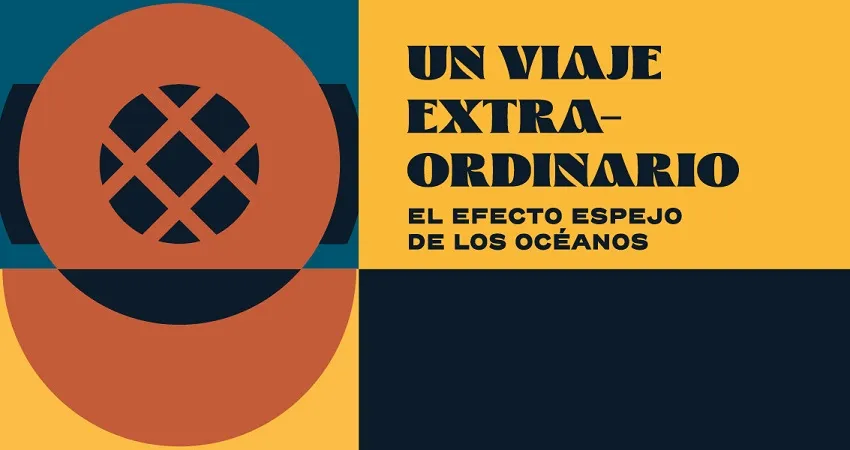An Extraordinary Voyage. The Mirror Effect of the Oceans
The oceans are the mirror of what is happening in the world. Increasing temperatures and pollution have a direct impact on the health of the oceans which in turn influences what happens elsewhere. “The sea is everything!”, declared Captain Nemo during the extraordinary voyage he undertook in Jules Verne’s Twenty Thousand Leagues Under the Sea (1870).
If Verne’s Extraordinary Voyages are known for any one thing in particular, it is for his optimism and the trust he places in scientific imagination at the service of mankind and its progress. The 62 novels that make up this collection are the result of what one might call a speculative design, as evinced by a number of things the author is known to have said, such as: “Anything one man can imagine, other men can make real”. Verne never ceased asking himself questions and he was in fact the harbinger of several scientific discoveries and inventions that would not be see the light of day until well after his demise. Which explains why inventors such as Isaac Peral — the engineer behind the world’s first torpedo submarine — didn’t hesitate to acknowledge him as his guiding light. When all is said and done, Verne’s ardent desire was that the advances of science should open up new and human possibilities for the future.
An Extraordinary Voyage. The Mirror Effect of the Oceans has also been conceived as an extraordinary voyage through a series of questions and tales that emerge from the oceans, ofttimes based on iconic scenes taken from the world of film or literature, paradigmatic designs inspired by the oceans, objects and works of art that delve into their imaginary, or on the words of leading ocean scientists who have studied the oceans and charted what we know about them.
An Extraordinary Voyage. The Mirror Effect of the Oceans is an exhibition, but it is also an exercise in design in its own right insofar as it configures a space in which ideas and questions are raised about the oceans from a creative point of view. With this in mind, a speculative design is created in the form of an exhibition that opens up new perspectives and scenarios, an exhibition that is grounded on innovations but also pays homage to the achievements of the past. Eschewing any ambition to anticipate the future, the exhibition explores our past and sheds light on actions that are being carried out in the present day, by raising questions and telling us stories that help us to be more aware of and to have more respect for the culture of the sea.
Because if we want to protect the oceans, we have to know them first: we need to know that they are the largest ecosystem on the planet; that their flora and fauna are the source of important biochemical substances for pharmaceutical use; or that they produce more than half of the earth’s oxygen and are by far our largest carbon sink. But it also allows us to speculate on what it conceals, and this exhibition is a plastic and visual journey of creativity and knowledge that tells tales for which the ocean provides either context or inspiration; stories that allow us to understand it better, to appreciate it more fully, and to generate reflections of impact and value. Because the sea is our mirror, as Baudelaire wrote in this poem Man and the Sea (1857).
In these days of immersive exhibitions, this exhibition focuses on the immersion of the spectator and on his or her capacity to imagine scenarios and develop their own capacity for agency. Using speculative design panels, texts, designer and handcrafted pieces, architectural projects, innovative materials and products, works of art and audiovisual documents, what we have here is a multidisciplinary and diverse exhibition that is both retrospective and prospective, sustainable and inclusive, an exhibition that combines history, knowledge and innovative creative practices.
After all, given the ocean’s primal nature, venturing into it is in itself an extraordinary voyage. Our world is a huge sea mass and water is a material that is found in every aspect of life. It is a complex physical, chemical, biological and cultural system that is still largely uncharted even though it occupies more than 70% of our planet: estimates suggest that more than 80% of the ocean has yet to be explored. It is an unpredictable place and if we decide to approach it and to venture into the unknown, we have to play by its own rules. A deliberate, demanding action. The sea can be a place where we can find ourselves, but it can also be a place where we can surpass ourselves, like Odysseus. The sensation of immersing oneself in the ocean is not unlike the way in which artists, design professionals or scientists immerse themselves in their respective tasks: a humble action due to the modesty it takes to concentrate on one tiny problem in the midst of immensity, where one must always be ready to be reborn.
An Extraordinary Voyage. The Mirror Effect of the Oceans draws on the creative universe to outline an ecosystem as a way to reassess just how important the oceans are. Divided into four sections — “Oceans as Scenery”; “Blue, the New Green”; “The Voices of the Oceans”; “The Difficult Crossing” — the fact that the exhibition is taking place in a city without a sea is by no means a coincidence: its organisers are convinced that the oceans are born in ourselves and that it is important that we all understand how important it is to know them better by exploring different issues and developing our own scenarios. Because if the ocean can be our mirror and our destiny, we will have to use all our creativity to rethink our future in complicity with it.
Curated by: David Barro
Museographic design: Mónica Maneiro, Vítor Mejuto
Graphic design: Cristina Moralejo ( DARDO)


